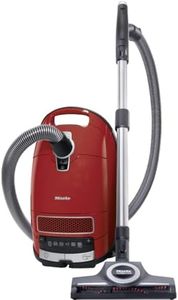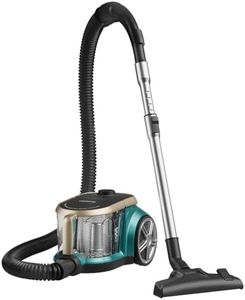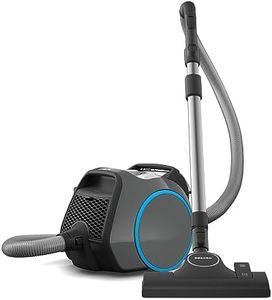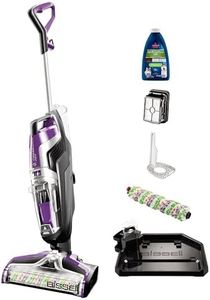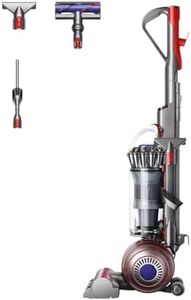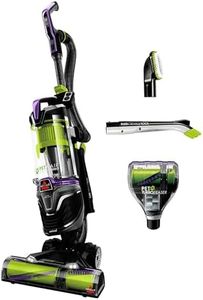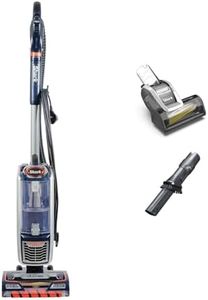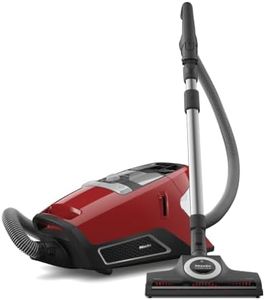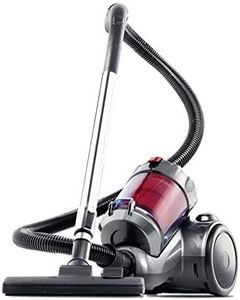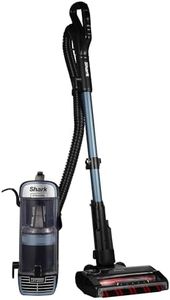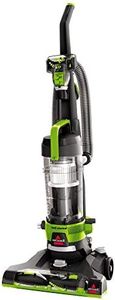We Use CookiesWe use cookies to enhance the security, performance,
functionality and for analytical and promotional activities. By continuing to browse this site you
are agreeing to our privacy policy
10 Best Corded Vacuums
From leading brands and best sellers available on the web.Buying Guide for the Best Corded Vacuums
When choosing a corded vacuum, it’s important to focus on the features that will best match your cleaning needs, home environment, and comfort. Unlike cordless vacuums, corded models provide continuous power, so you don’t have to worry about battery life. Think about the kinds of floors you have—carpet, hard floors, or a mix—as different vacuums excel in different conditions. Also, consider things like how easy it is to move and use the vacuum, how much dust it can hold, and how well it keeps allergens inside. Focusing on the right mix of performance, convenience, and filtration will help you find a vacuum that fits your lifestyle and makes cleaning easier.Suction PowerSuction power refers to how strongly the vacuum is able to lift dirt and debris from your floors and surfaces. Higher suction is important for deep cleaning, especially if you have carpets or pets, while lower suction may be fine for bare floors. Suction strength is often measured in watts or air watts, but sometimes just described as 'strong' or 'powerful.' For homes with pets or thick carpets, you’ll want a higher suction level, while homes with mostly hard flooring can do well with moderate suction. Be sure to balance strong suction with ease of pushing the vacuum—not all the strongest models are the easiest to use.
Filtration SystemThe filtration system captures fine dust and allergens, keeping the air in your home cleaner. Good filtration is especially important for people with allergies, asthma, or pets. Some vacuums use basic filters, while others have multi-stage filters or HEPA filters that trap even tiny particles. HEPA filtration is best for allergy sufferers and families with young kids. If air quality isn’t a top concern for you, a basic filtration system may be sufficient; otherwise, aim for a vacuum with a sealed HEPA filter.
Cord LengthCord length determines how far you can go before needing to switch outlets. Short cords (under 20 feet) work well for small rooms or apartments, while medium cords (20-28 feet) are comfortable for most average-sized homes. Long cords (over 28 feet) are best for large homes or if you want to clean multiple rooms before unplugging. Think about the size of your space and how many outlets you have—if you dislike stopping to find a new plug, choose a vacuum with a longer cord.
Dust Bin or Bag CapacityThis feature refers to how much dirt and debris the vacuum can hold before it needs to be emptied. Small-capacity bins or bags (under a liter or less) fill quickly and are best for quick cleaning or small spaces. Medium sizes (1-2 liters) are suitable for regular cleaning in average homes, and large capacities (over 2 liters) are handy if you have a big family or pets that shed a lot. Choose a size that matches how often you want to empty the vacuum—less frequent emptying means more convenience.
Weight and ManeuverabilityWeight affects how easy the vacuum is to carry up and down stairs or push around the house. Lighter vacuums (under 10 pounds) are best for those who need something easy to handle or have mobility issues, while heavier vacuums (over 15 pounds) sometimes offer more power but can be harder to use. Some vacuums are designed to swivel or have ergonomic handles to improve maneuverability. If you have a large space or lots of furniture to clean around, look for a model that’s easy to push and turn.
Floor Type CompatibilityNot all vacuums perform equally on every floor type. Some are better for thick carpets, others for hard floors, tiles, or rugs. Adjustable brush heads or height settings allow the vacuum to clean different surfaces effectively. Consider your main flooring type: if you have mostly carpets, go for a vacuum specialized for carpet cleaning; for hard floors, look for one that won’t scratch and picks up fine dust. If you have a mix, models with adjustable settings offer the most versatility.
Attachments and AccessoriesAttachments like crevice tools, dusting brushes, and upholstery tools can help clean hard-to-reach areas, furniture, and stairs more effectively. Some vacuums come with specialized pet hair tools or turbo brushes. Consider which accessories you’ll actually use based on your home—if you have pets, stairs, or lots of upholstery, these extras can make a big difference.
Noise LevelNoise is measured in decibels (dB) and can range from relatively quiet to quite loud. Lower noise levels (around 60-70 dB) are easier on the ears and best for shared spaces, apartments, or if you have small children. Higher noise vacuums (over 80 dB) may have more power, but can be unpleasant to use for long periods. If you’re sensitive to sound or often clean when others are home, choose a quieter model.
